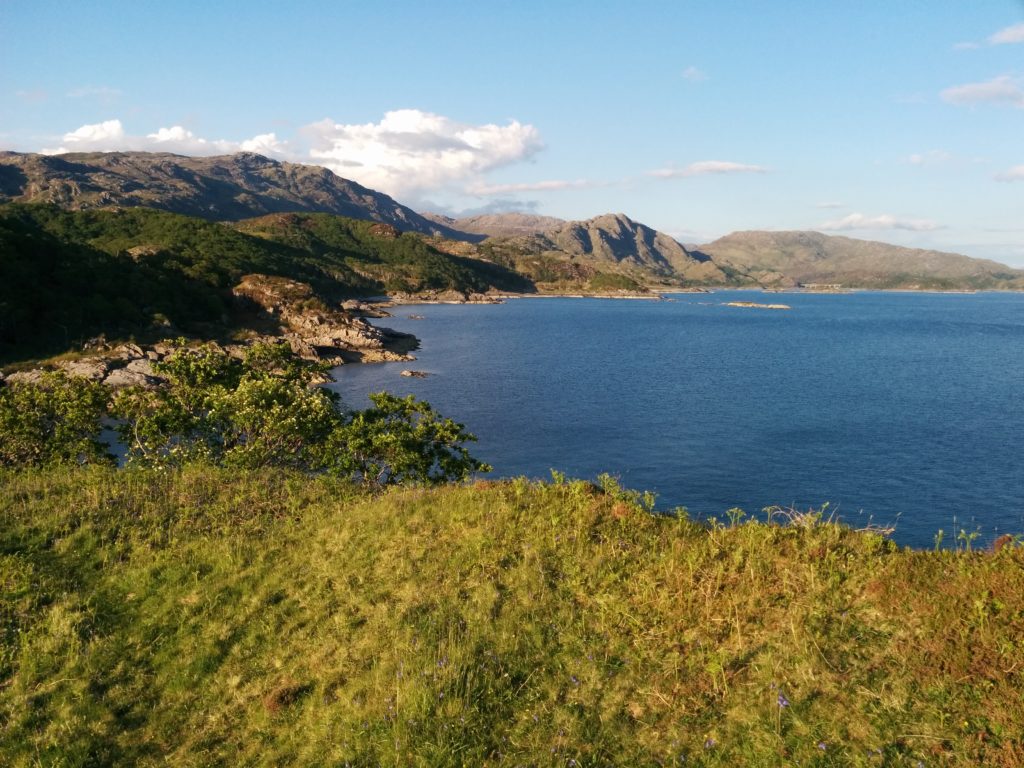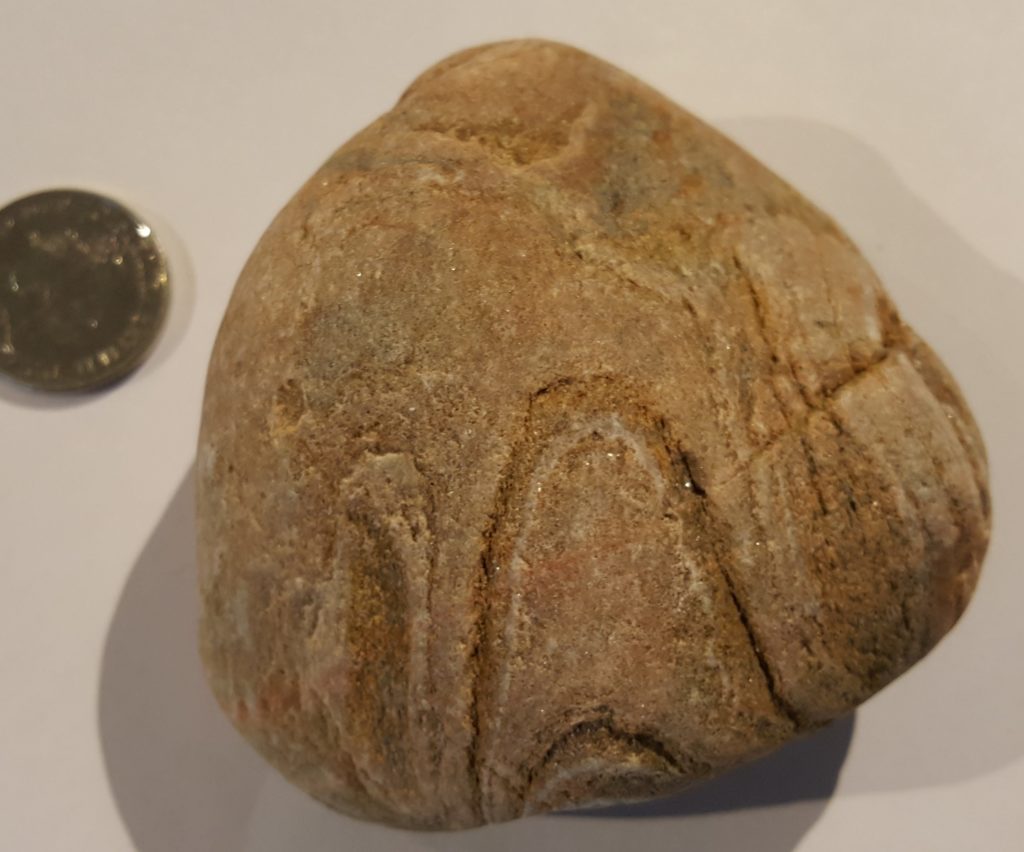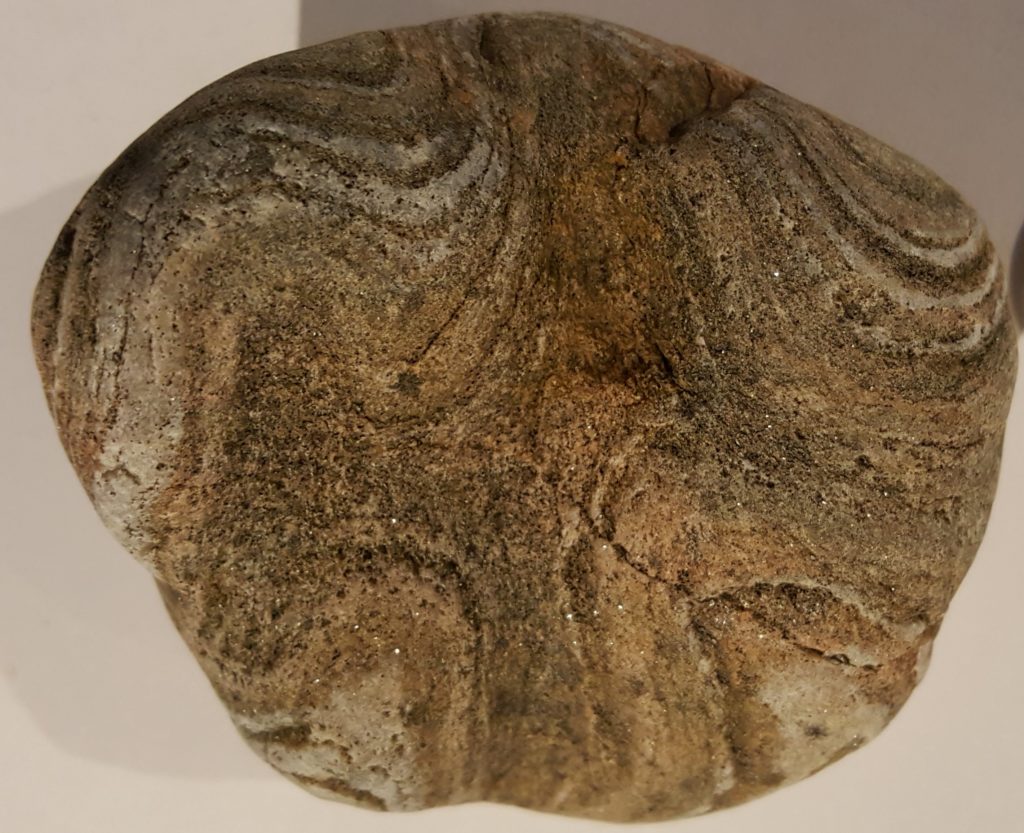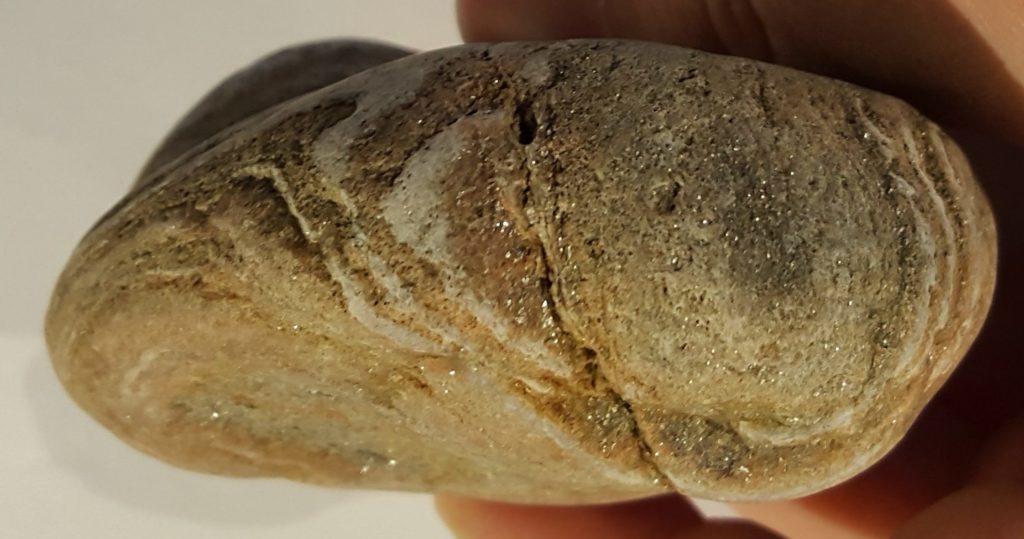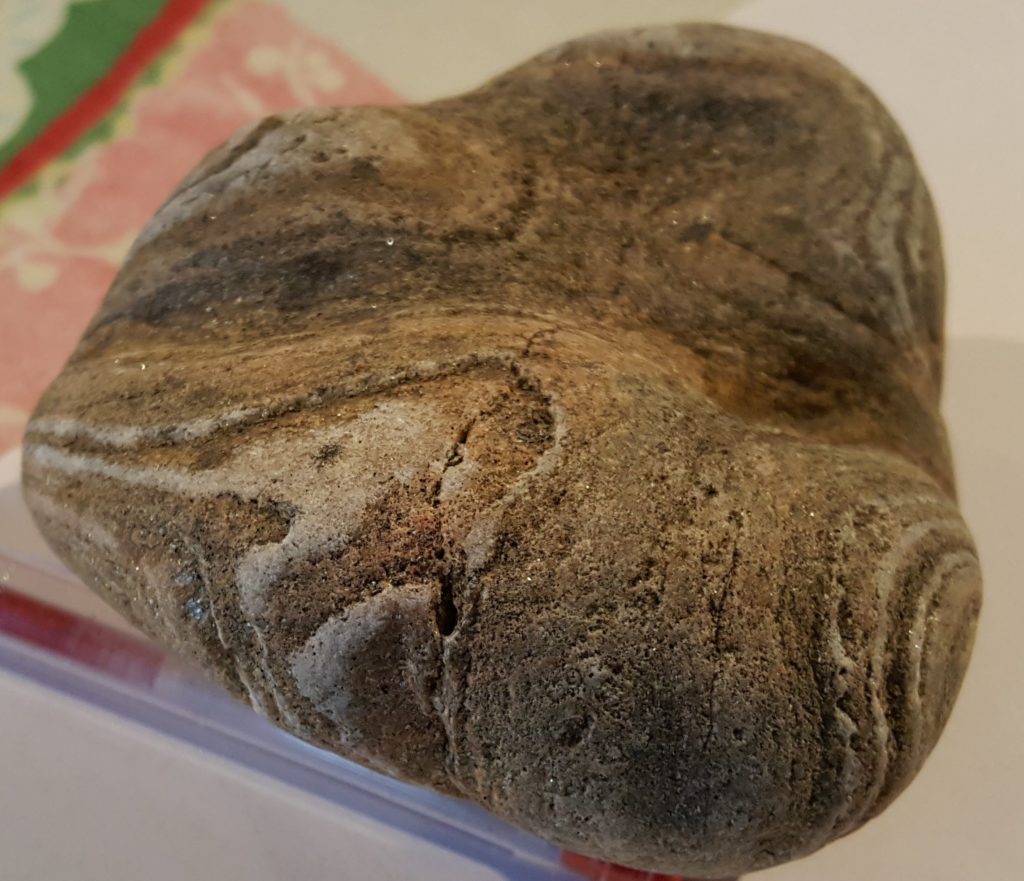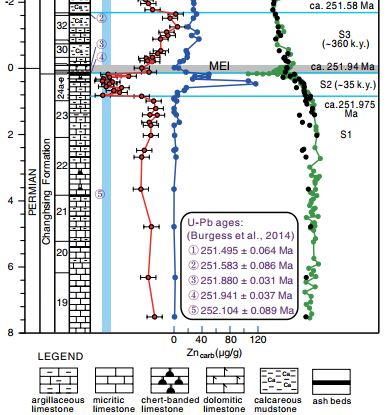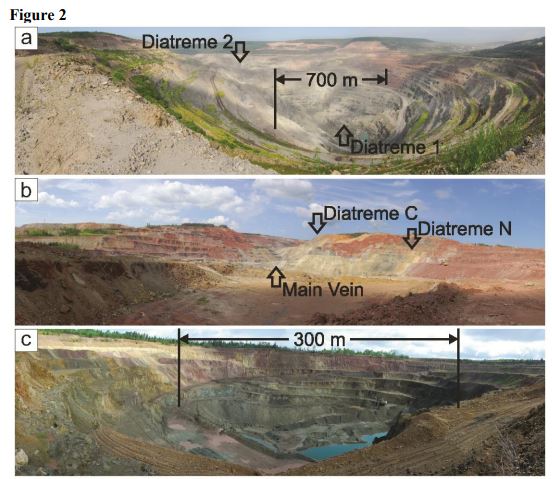Every day history is being made. This is true for geology as well. Out at sea layers of sand or mud are being laid down that will become the geological records of the future. The period of geological time that we are in right now is called the Holocene epoch, which is part of the Quaternary period, which is part of the Cenozoic Era. Let’s take a step back and tell the story of how we got to the Holocene.
The Cenozoic Era started 66 million years ago with the extinction of the dinosaurs, at a time when massive volcanic eruptions and a huge meteorite impact caused enormous changes to life on earth. With the dinosaurs gone (apart from birds, which are types of dinosaur – just look at their feet!) mammals were able to evolve into new species. The earth’s tectonic plates continued their slow dance. The Atlantic ocean continued to open, splitting Europe from North America (they used to be joined together). The Indian plate (which used to sit alongside Africa, Antarctica and Australia) moved quickly north and around 60 million years ago punched into the Asian plate. This started to form the huge mountains of the Himalaya, the high Tibetan Plateau and the the Tian Shan. Moving through the Cenozoic, animals and plants and the geography of the earth become more familiar. Grasses first become important around 40 million years ago. Also animals that eat grass, like horses and cattle. One thing that was different was the climate, which was much hotter, with higher levels of CO2 in the atmosphere and no ice caps.
Significant glaciers started to form in Antarctica around 34 million years ago. By the Quaternary period the earth is in an Ice Age, with large ice caps on Greenland and Antarctica and permanent glaciers in high mountains around the world. The Quaternary started 2.588 million years ago and it hasn’t ended yet. There have been ice ages before, during the Proterozoic – when the earth nearly froze completely – also in the Ordovician and the Carboniferous. These are times when the levels of CO2 in the atmosphere are relatively low. As ice caps lock up lots of water, sea levels tend to be low also. The amount of ice is relatively sensitive to changes of the earth’s spin causing changes in the amount of sunlight the earth receives. Tiny variations in the spin of the earth, caused by the irregular tug of other planets in the solar system are called Milankovitch cycles. There are different Milankovitch cycles that move at different speeds, so the pattern is complicated, like listening to many drummers who are moving at different speeds. The main effect is a pulse of between 40,000 to 100,000 years. We see this as dramatic changes in the volume of ice and of the climate of the earth. These are called glacial and interglacial periods and the earth has moved back and forth between them through the Quaternary.
We know what an interglacial period looks like, as we are in one right now. During past glacial periods, New York was covered by a layer of ice many kilometres thick, as was northern Europe. In China, the ground was permanently frozen as far south as Beijing and most areas were desert. Finely ground rock, from ice caps and glaciers further north or in the Himalayas was blown across this desert building up thick deposits of a fragile yellow soil called loess. An area called the Loess plateau covers the upper and middle parts of the Yellow River and makes excellent farmland. The soil erodes easily and the Yellow River’s name comes from the large volumes of eroded loess that it contains.
The Holocene epoch started 11,700 years ago and it’s the period of time since the end of the last glacial period. During it the climate has been relatively stable, with limited ice cover. But there have been many changes over that time. The first half of the Holocene saw areas that had been covered by ice slowly move to more modern conditions. Sediments in lakes contain ancient pollen and allow the plant species in the area to be identified. In many places there was a slow return of forests, with more and more species becoming established as thousands of years passed. Tropical rain forests, like the Amazon, were quite restricted during the glacial period and they also grew rapidly during the early Holocene. Some climates were very different. Parts of what is now the Sahara desert in Africa was a fertile place during the Holocene. Here we have evidence from ancient humans. Cave paintings show the hunting of giraffes and other large animals in places now barren desert.
Human beings are the most remarkable thing about the Holocene. The history of human evolution is complicated. Creatures clever enough to make stone tools have been around for 2.5 million years, but the oldest known fossils of modern humans (Homo Sapiens) are 300,000 years old. By 50,000 years ago humans had spread from Africa across much of the world and were using sophisticated stone tools and burying their dead. They were as clever as us, but had very little technology to help them.
Even with simple stone tools, humans made an impact. The ground in Siberia is frozen. Within it people find the corpses of extinct animals, like giant wooly elephants called mammoths. These animals used to be extremely common, but they became extinct during the early Holocene. Why? The changing climate might be responsible, but some believe that intense hunting by human beings is the main reason. In many sites across the world we have evidence of humans killing and eating large numbers of mammoths and other extinct animals. There is a debate about the most important cause of extinction, but it’s clear that even simple stone tools could be extremely effective.
Also human brains can be deadly. One effective method of hunting mammoth and other animals that live in herds was to scare them and drive them over cliffs, where they fell and died. During the Holocene humans took advantage of the improving climatic conditions to develop more and more new skills and technologies. The impact of increasing numbers of humans and their increasing ability to change the earth and the animals and plants upon is a theme of the later Holocene.
When populations of humans are small, we can live by hunting animals such as mammoth and gathering wild foods, like nuts or shellfish. Such foods are rare, so groups of humans would often move, following migrating animals, moving to different foods sources throughout the year or simply moving to new places. From the early Holocene we have evidence in the Middle east of the first villages or towns. For people to become settled, we need a reliable source of food that can be stored to provide food all year round. These first villages were based on harvesting grains from grasses – wild versions of modern day wheat or other cereals. Over time, selection of the best wild grains lead to the breeding of domesticated versions. These may require human intervention to thrive, but gave a good yield of food. A similar process occurred with animals. Wolves became dogs, who could help defend herds of domesticated sheep from attack by non-human predators. Hunter gatherers became farmers. Over time the same process affected fruit and other vegetables. Plants with small bitter fruits were slowly changed by selecting the best ones to end up with the large and juicy fruits we enjoy today. Very little of what we eat today is truly wild.
This process happened in different areas based around different foods. People in Central America domesticated maize from around 8000 years ago. In China and southeast Asia people started growing rice and eating it from around 7500 years ago.
Once people have worked out how to grow reliable sources of food, they can move across the land, spreading their seeds and animals as they go. We can trace this via records of pollen in lake sediments and other wet places. In places that were previously covered in trees, farmers would remove them, dramatically changing the landscape. The natural regeneration of forest, with seeds growing into trees is broken by domesticated animals like sheep eating the young trees. The wide open mountains and fields of the British countryside, for example are entirely man-made.
In a group of hunter-gatherers, groups of people tended to be small and most were involved in producing food. As farming villages became towns, a group of people emerged who did not need to directly work to produce food. These people – kings, priests, merchants, craftsmen and others had the time to produce new things, like writing, organised religions, metal objects and so many other things. In some places the nature of the farming required many people to work together. In the Mesopotamian basin (modern-day Syria and Iraq), where some of the earliest towns were formed, systems of irrigation were required to get water from narrow rivers into broad areas of farmland. Technology itself sometimes also encouraged the growth of large kingdoms. Bronze is a metal alloy produced from a mixture of copper and tin. In the eastern Mediterranean of Europe there is copper, but the tin had to come from far away, like Afghanistan or the British Isles. Only large kingdoms or empires had the resources to bring together such distant materials.
The period of time when people are using Bronze is called the Bronze Age and it was followed by the Iron Age and so we are moving into history rather than geology. Let’s take a step back and consider this enormous change in human activity from the point of view of the wider planet. Even at the start of the Holocene, humans may have been causing extinctions of animals. The rate of extinction has only grown since then, with no sign of stopping. Direct hunting is not the only cause. Farming landscapes are very different from ones untouched by man and while some animals have adapted (rats, for example), many have not.
Some human impacts on the planet that we think of as modern are surprisingly old, for example pollution. Ancient layers of ice in the Greenland ice cap are a record of atmospheric pollution. Each layer is a record of ancient snow, plus trapped bubbles of air. Studying this record shows traces of lead pollution from Roman mining in Spain from over 2000 years ago. Similar records from South America show the traces of local mining from 3500 years ago.
These ancient traces of human activity are dwarfed by the current impacts. During the Quaternary and most of the Holocene, CO2 levels slowly varied in step with Milankovitch cycles. Human burning of fossils fuels has dramatically changed this. Levels of CO2 are now higher than they have ever been before in the Holocene or even the Quaternary. Some geologists argue that the Holocene is over and that we are now in a new geological Epoch, that they call the Anthropocene.
First publication by Xiaoduo Media in Front Vision. Front Vision is a Chinese online science magazine for children. Reproduced with permission.


